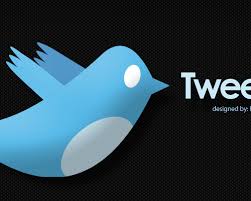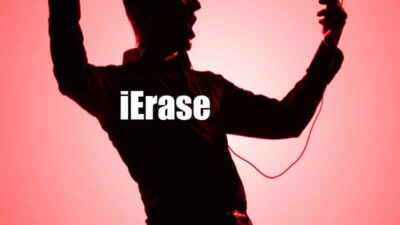Social Media Isn’t Just a Marketing Tool but an Efficiency Driver
 What’s the bigger idea: social media as marketing stimulus or social media as a way to innovate business processes?
What’s the bigger idea: social media as marketing stimulus or social media as a way to innovate business processes?
Every brand manager or CMO should recognize that it’s both — and in a disruptive economy, you need to take advantage of both outcomes. And when the potential dividends of a marketing effort include changes to a company’s process, we need to rethink the entire notion of ROI.
This isn’t an easy task, as marketers typically leave things such as organizational strategy and technology implementation to other stakeholders — keeping lines cleaner and allowing marketers to focus on, well, their areas of focus. You let technology folks do technology, quality folks do quality and service folks do service.
But social media softens the silos. It’s hard to turn over a rock in social media, dip your toe into Twitter or comment on someone’s blog without rethinking the fundamentals of a firm’s organization, product development and even listening infrastructure. Such firsthand experience begets inspiration. Inspiration powers change. And change is needed more than ever before as we’re asked to contract our resources.
Of course, I’m not just speaking for myself. A massive number of folks from the marketing community not only talk about expanding communication opportunities, but also posit theories of efficiency, organizational transformation and more holistic and integrated models of measuring success and outcomes. And, OK, there’s no shortage of oversized egos who romanticize the wisdom of the participatory plebs but, gosh darn it, there’s enough content about how social media makes processes better, faster and cheaper to make a six-sigma black belt salivate. Let’s take this piece by piece.
Social media and communication
Social media, at the end of the day, is about reinventing communication. Executed wisely, it’s a new covenant of interaction between consumer and consumers, and, more recently, consumers and business. You could even argue that it’s the long-overdue realization of one-to-one marketing that we over-romanticized back in the 1990s and inexcusably put on the “direct marketing” shelf.
But “organizational” communication, across thousands of companies and brands, is an area so bankrupt with inefficiency and scared of change that it’s hard not to wonder whether your latest Twitter “aha moment” is better shared with the chief information officer or human resources than with the marketing team.
Of course, in the age of social media, chief marketing officers need to wear both hats. If anything, they must become more of like general managers. Shouldn’t the rules of consumer “engagement” apply to how employees communicate? You get the idea.
Driving innovation
Then there’s innovation — the engine of value creation and company growth. Social media is one massive feedback loop. It’s chaotic on the surface, but unmistakably efficient if you consider the life cycle of vetting a good idea or absorbing the ideas of others. If you really peel the onion on what’s happening across blogs, Twitter and other online communities, brands are setting up de facto listening labs that rewrite the rules of gathering and managing feedback. We’re getting more ideas faster. The funnel is broadening. The filters are sharper, more immediate and grounded in deeper levels of intimacy with the product or proposition.
The end outcome, whether intentional or incidental, is a disintermediation of existing, and potentially more expensive, processes. That alone should be reason enough for the CEO to personally initiate “Social Media Day” or “CGM [consumer-generated media] Day.”
Procter & Gamble’s Kim Dedeker, speaking to the Advertising Research Foundation’s recent Listening Summit, suggested that brands need to reinvent “how to listen” not merely to figure out how to turn on online strategy or social media, but far more importantly, to reinvent and “inspire” the entire market research department. Put another way, listening is about reinvention.
The irony here is that a free tool known as Twitter was being used in real time by many of the attendees, the resulting data streams inspiring new ideas and playback throughout the conference.
Joel Rubinson, chief research officer of the ARF, called it “an amazing record of our research transformation conference, definitely more insightful than my old-school note taking. The big idea was that listening creates a fast-learning organization, which is the only way marketing can catch up to the consumer.”
Let’s fixate for a moment on the word “inspiration.” What’s more critical in this down economy: improving marketing effectiveness or inspiring the enterprise? Inspiration, of course. Inspiration opens our trajectory of what’s possible, compels us to do “irrational” things such as sending memos to the CEO about what the organization must really do to regain competitive advantage. Inspiration is empowering and enabling, not constraining or judgmental.
Driving margins, saving money
Let’s end by hitting the sweet spot of practicality. At the end of the day, our foray into social media is teaching us how to save money. Consumer-generated media and social-media-enabling tools allow us to create websites and blogs for extremely low prices — a far cry from the multimillion-dollar websites we built when I was co-leading interactive marketing at P&G back in the 1990s. Brands including Ford, Comcast, Toyota, Southwest, Sony, Denny’s and others are testing new models of customer service on platforms such as Twitter that, under the old “enterprise” rules, would have cost millions to launch or even test. It’s not that everything’s cheap, but the barriers to low-cost earning have plummeted.
Whether we as marketers admit it or not, our dips into the collective social-media learning lab are making it really hard to justify $5,000-a-pop conference trips where we listen, learn, interact and collect leads. One could easily argue that the collective, real-time wisdom of social media, thoughtfully absorbed, easily substitutes for attending a “live” conference. And online video makes the substitution all the more tolerable. Video is a process innovation that is rewriting all the rules of efficiency.
Across the social-media airways there’s no shortage of inspired thinking about what’s possible. At a time when organizations are under intense pressure to reinvent themselves — to take lemons and make lemonade — it might be the right time to focus our efforts, even for a moment, on the overall “business process” equation. That’s probably the easiest and most obvious way to demonstrate ROI around all of these efforts.


Frank Wilson is a retired teacher with over 30 years of combined experience in the education, small business technology, and real estate business. He now blogs as a hobby and spends most days tinkering with old computers. Wilson is passionate about tech, enjoys fishing, and loves drinking beer.





















 Sony VAIO Mannequins Take Over Grand Central Station
Sony VAIO Mannequins Take Over Grand Central Station
Leave a Reply
You must be logged in to post a comment.